#academy of fine arts cracow
Text
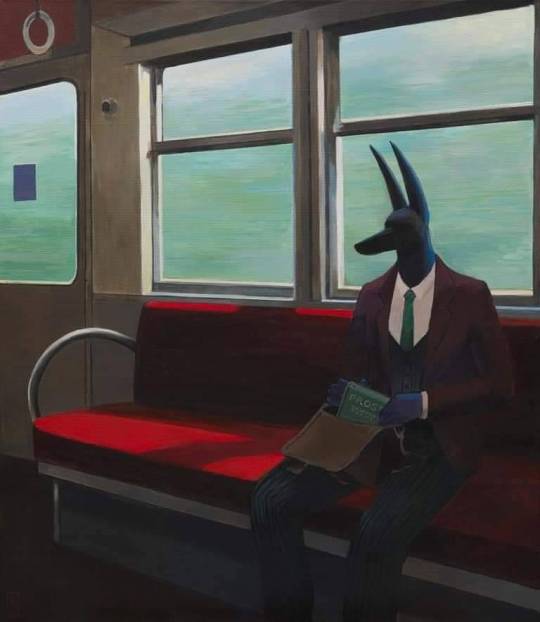
Journey
Joanna Karpowicz 2023
3 notes
·
View notes
Text
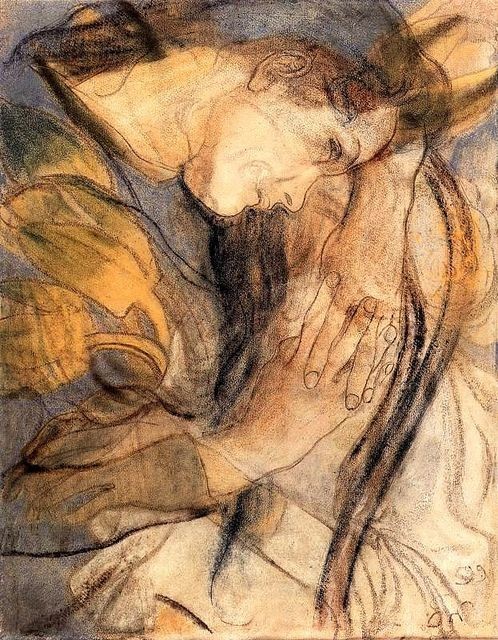
Stanisław Wyspiański ( Polish, 1869-1907)
Study of a Girl in a Chair, 1899
Pastel; 60 x 46 cm. (National Museum, Warsaw, Poland)
He was a Polish playwright, painter and poet, as well as interior and furniture designer. A patriotic writer, he created a series of symbolic, national dramas within the artistic philosophy of the Young Poland Movement. Wyspiański was one of the most outstanding and multifaceted artists of his time in Europe. He successfully joined the trends of modernism with themes of the Polish folk tradition and Romantic history. Unofficially, he came to be known as the Fourth Polish Bard (in addition to the earlier Three Bards: Adam Mickiewicz, Juliusz Słowacki, and Zygmunt Krasiński).
Wyspiański’s artistic output is very eclectic. Among dramas and poetry, one can find there views of Cracow (drawings, sketch-books, oil-paintings, pastel drawings), portraits and self-portraits, designs of stained glass windows and paintings, illustrations, graphic art, plans of furniture and interiors, development of Wawel. Drawings, such as 1890 self-portrait and drafts from his journeys across Europe and Poland, are among Wyspiański’s well-known works. He later created a herbarium by drawing plants. He was, however, most frequently using the technique of pastel; his first pastel drawings were produced between 1890 and 1894. They mainly present the artist’s family, friends and other artists. Wyspiański eagerly drew his children in everyday situations such as sleeping or feeding.
In 1906 Wyspiański became professor of the Academy of Fine Arts in Kraków, he was also a member of the City Council. In his last years Wyspianski’s health condition deteriorated, as a result, he underwent medical treatments in Rymanów and Bad Hall. Then he settled in his small cottage in a village of Węgrzce. He died of then incurable syphilis. His funeral took place in Kraków and became a national manifestation. Wyspiański was buried in the Crypt of the Distinguished in the Skałka Church.
13 notes
·
View notes
Text







Marianna Stuhr (born 1982, Poland) is a graduate of the Academy of Fine Arts in Krakow. She also obtained the title of doctor of arts after doctoral studies at the Academy of Fine Arts in Warsaw. She received several awards in graphic and painting competitions. Her works are in private and public collections, incl. at Fondazione Italo-Svedese in Venice, in the Academy of Fine Arts in Cracow collection, the Academy of Fine Arts in Warsaw and the University of Connecticut.
The artist created a series of paintings inspired by distant galaxies and the processes taking place there.
6 notes
·
View notes
Text

Iwona Demko (Polish, born 1974)
Różowy kwadrat na białym tle. Dla kobiet, które nieustannie się krzatają, 2015
80 x 80 cm. (31.5 x 31.5 in.) @iwonadem
{title translation: Pink square on a white background. For women who are constantly bustling}
IWONA DEMKO
born 7 August 1974 in Sanok, in Poland
1989-1994 - State Secondary School of Fine Arts, Krosno, Poland
1996-2001 - Faculty of Sculpture, Academy of Fine Arts, Cracow, Poland
2000 - Scholarship at Ecole des Beaux-Arts et des Arts Appliques,
Toulouse, France
2001 - Graduation diploma with honours
2008 - employed as an assistant lecturer in the Sculpture Studio IV in the Faculty of Scuplture of the Krakow Academy of Fine Arts
2012 – awarded the PhD degree
via Artist's webstie #IwonaDemko #feministart #PolishWomenArtists #womensart #polishart #sztukakobiet #palianshow #sztuka #sztukawspółczesna #doktora @abwwia
2 notes
·
View notes
Text

Irina’s prayer by Piotr Topolski. Oil on canvas, 2022. Private collection. More detail at artist website.
Piotr Topolski is a polish artist, born in 1960. Studied in the Academy of Fine Art in Cracow.
The artist creatively draws upon the traditional painting style of the Old Masters.
He has painted for private collections of art collectors all over the world.
1 note
·
View note
Text
"Escaping the Holy Land" icon (Ukraine/Poland)
"Escaping the Holy Land" icon by Borys Fiodorowicz (title suggested by Marek Bożek).

A graduate of the Academy of Fine Arts in Warsaw, the artist comes from Ukraine but currently lives and works near Cracow, Poland. The canvas of his painting are images known from Christian iconography, transposed into the language of the modern world.
Borys Fiodorowicz presented his works at many art auctions in auction houses, at individual and collective exhibitions, and his icon paintings are part of the collections of private collectors from Poland and abroad.
All text from https://www.facebook.com/photo/?fbid=10229727336358081&set=a.10229394936568294
===
See more icons by Borys at https://www.instagram.com/borysfiodorowicz/
Some other contemporary icons by Borys Fiodorowicz that I found on FB:
"Holy Refugees With No Entry Visa"

+++

+++

+++
+++

+++

+++

+++

+++

+++

+++

1 note
·
View note
Text
Rafal Bujnowski
1974, Polonia
Estudios: Arquitectura en Cracow Polytechnic, Arte en Academy of Fine Arts en Crakow.
Exposiciones: Museum of Contemporary Art Leipzig. National Gallery of Art Polonia,
Premios: Art Award Future of Europe
Rafal Bujnowski organiza sus pinturas en grandes y pequeñas series para las que se inspira de su
entorno inmediato. Sus motivos son simplificados y puestos contra fondos neutros, en los que
analiza el medio de la pintura y se enfrenta a la tradición, oponiéndose al principio de la
originalidad con la producción en serie y reduciendo el concepto de mímesis a lo absurdo al hacer
réplicas de objetos de nuestra realidad.
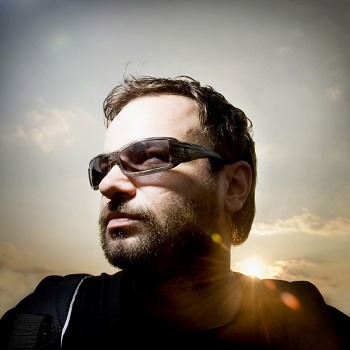
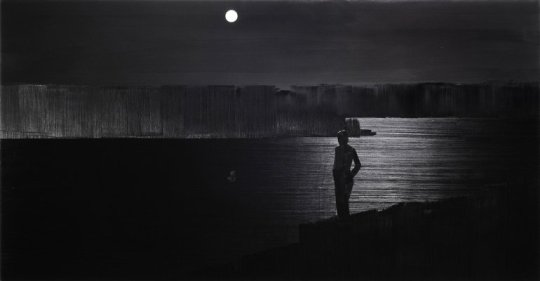
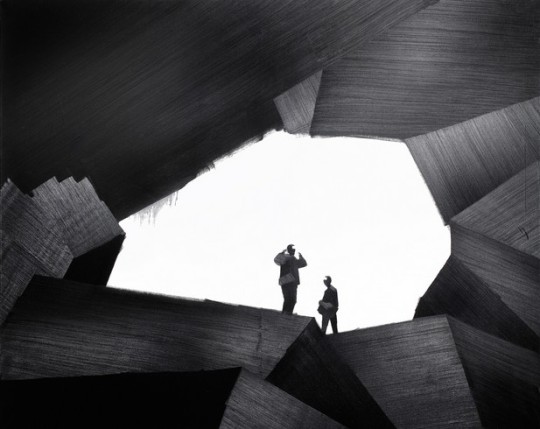
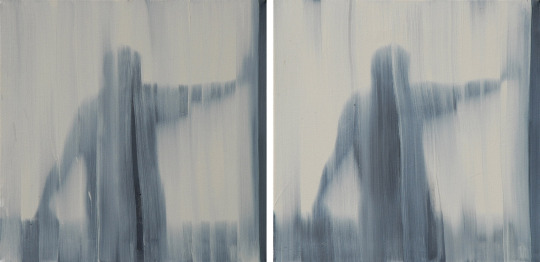
#rafal#bujnowski#1974#70#polonia#europa#arquitectura#cracow polytechnic#academy of fine arts cracow#mac#mac leipzig#entorno#simple#contraste#blanco#negro#tradicion#serie#replica#pintura#pintor
2 notes
·
View notes
Text
BUJNOWSKI, RAFAL

Artista contemporáneo nacido en Polonia en 1974 (46 años).
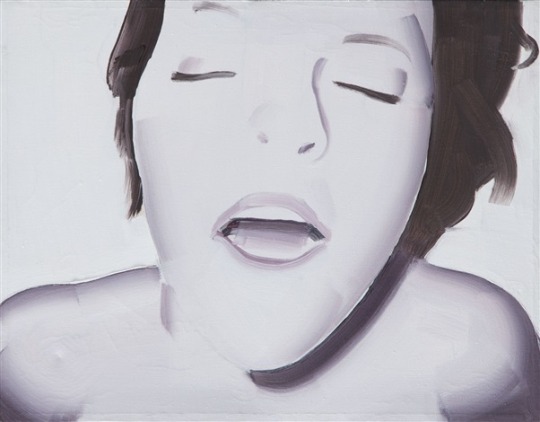
Untitled , 2003
oil on canvas
35 x 45 cm. (13.8 x 17.7 in.)
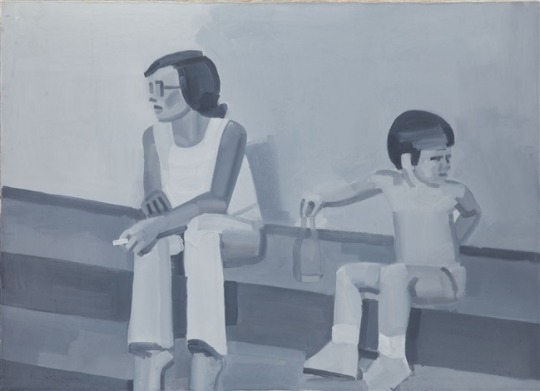
Untitled , 1999
oil on canvas
87 x 120 cm. (34.3 x 47.2 in.)

Pope , 2002
oil on canvas
50 x 40 cm. (19.7 x 15.7 in.)

How to paint VHS tape , 2001
oil on canvas
120 x 120 cm. (47.2 x 47.2 in.)
#B#BUJNOWSKI#rafal#Rafal Bujnowski#art#arte contemporáneo#the Cracow Polytechnic#Academy of Fine Arts in Crakow#Ladnie#gallery Otwarta#krakov#Art Award Future of Europe#Museum for Contemporary Art Leipzig#Galeria Raster Warsaw#RENTAL Gallery New York#Jiri Svestka Gallery Prague#centre for contemporary art Prague#National Gallery of Art Warsaw#Academia de Bellas Artes Jan Matejko de Cracovia
0 notes
Photo
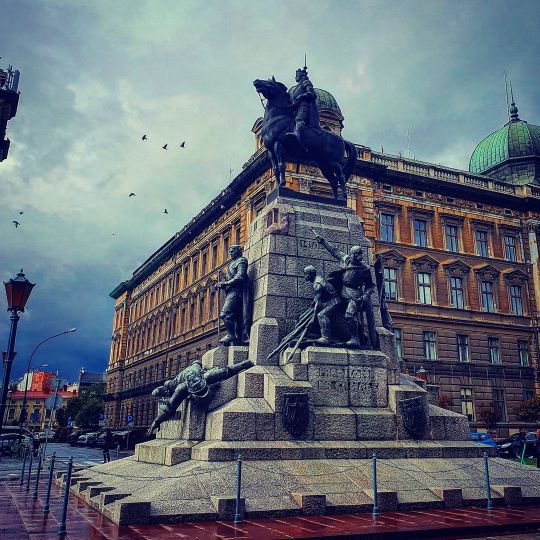
And slowly but faithfully... autumn 🍂 is here in Krakow. How are you enjoying it? The smell of crushed leaves, apple pie, cider, all are perfect for me 💕 Autumn is my season of joy 😊 #DiscoverPolandWithTheTwistedRedLadybug #discoverKrakowwiththetwistedredladybug #discoverPoland #discoverkrakow #poland #polskajestpiękna #polska_w_obiektywie #polskanaweekend #badzturystawswoimmiescie #polska #krakow #Cracovia #cracow #placjanmatejko #grundwald #architecture_hunter #architecturelovers #architecturalsymbols #statue #instapoland #instakrakow (at Jan Matejko Academy of Fine Arts) https://www.instagram.com/p/CisMzL2oJhg/?igshid=NGJjMDIxMWI=
#discoverpolandwiththetwistedredladybug#discoverkrakowwiththetwistedredladybug#discoverpoland#discoverkrakow#poland#polskajestpiękna#polska_w_obiektywie#polskanaweekend#badzturystawswoimmiescie#polska#krakow#cracovia#cracow#placjanmatejko#grundwald#architecture_hunter#architecturelovers#architecturalsymbols#statue#instapoland#instakrakow
11 notes
·
View notes
Photo


Daniel Pielucha was born in 1959 in Wieluń. He graduated from the Academy of Fine Arts in Cracow. His genre of painting is known as "Nadrealizm Polski" ("Polish Surrealism").
For more of his works visit https://www.facebook.com/media/set/?vanity=1877043622567941&set=a.3058617197743905
30 notes
·
View notes
Photo



“Genesis” Oil on Canvas
Born in Olsztyn, Poland, Yarek Godfrey (real name Jaroslaw Pawel Nowicki) was a Polish artist of French, British and Austrian origins. In 1982 he graduated from the Academy of Fine Arts in Cracow and the Studies for Stage Costume design for theater in Cracow.
Yarek Godfrey.ow (surname pronounced God-Free oh-vay), whose art gives him the distinctive label of "stunning gothic classicism", brings to us the "larger -than-life" theatrical and mythological, almost biblical or should we dare, romantic, powerful paintings.
“I'm not quite sure we can talk about painting or music. This is a domain of different senses which words can't describe, that's why I'm using often the colors without names to translate the unknown sounds of my soul. I've named this process:"never-ending story" so if I stop working on the painting that's because someone tells me inside:"that's it" - and I never know why...”
In 1983 he moved to Paris, where he lived until his death in 2014.Godfrey received numerous awards for his work. He presented his work at numerous group and individual exhibitions, primarily in the United States and France, but also in Belgium, Monaco or Italy. He died tragically on March 28th, 2014.
“The desire and the power to create gives birth to images composed from my memories, dreams and hopes. A message to pass along? Let's rather say: another mark of the hand printed on the wall of the cave as if to say: "I was here"...we always return to the source.”
Sources: https://www.fineartphotographyvideoart.com/2010/11/godfrey-yarek-poland.html
https://www.tuttartpitturasculturapoesiamusica.com/2010/11/godfrey-yarek.html
Poem Source: https://cocoessences.com/2020/10/07/our-love-is-gonna-live-forever-2/
53 notes
·
View notes
Text
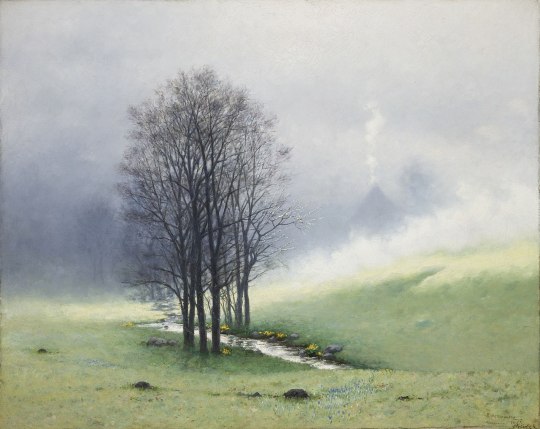
Stanislaw Witkiewicz ( Polish 1851-1915)
Mgła wiosenna (1897) Springtime Fog
(National Museum, Cracow, Poland)
Oil on canvas; 60.5 x 76 cm.
Stanisław Witkiewicz was a Polish painter, architect, writer and art theoretician. He was born in the Lithuanian village of Pašiaušė in Samogitia, at that time, in the partitioned Polish-Lithuanian lands ruled by the Russian Empire. Witkiewicz studied in Saint Petersburg, 1869–71, then in Munich, 1872–75. He created the Zakopane Style (also known as Witkiewicz Style in architecture. He was strongly associated with Zakopane and promoted it in the art community.
Stanislaw Witkiewicz often said that it is quite insignificant if a canvas shows a country wench picking turnips or Zamojski at Byczyna, since prime importance is ascribed not to "what" but to "how". "The recognition of the artistic element as the most significant component of art", whose intention was to show true reality, unadorned and devoid of costume, opposed the Jan Matejko version of historicism. It gradually led to the emancipation of art from national and ideological duties, and the comprehension of the whole realm as completely independent and autonomous.
His son, Stanisław Ignacy Witkiewicz, became a famous painter, playwright, novelist and philosopher, also known (from the conflation of his surname and middle name) by the mononymous pseudonym "Witkacy." Witkiewicz had strong views against formal education: "school is completely at odds with the psychological make-up of human beings". He applied this principle in his son's upbringing and was disappointed when the 20-year-old Witkacy chose to enroll at the Academy of Fine Arts in Kraków.
In 1908, suffering from tuberculosis, the elder Witkiewicz left his family in Zakopane and relocated to Lovranno, a fashionable resort in what was then Austria-Hungary, which today is in Croatia. He died there in 1915.
8 notes
·
View notes
Text

Jadwiga Maziarska (Polish, 1913–2003)
Untitled, 1995
Oil, relief, and wax on canvas
70 x 55 cm. (27.6 x 21.7 in.) @abwwia

Born in Sosnowiec in 1913. From 1934 to 1939 studied at the Cracow Academy of Fine Arts. After 1945 she was associated with the Group of Young Artists and the Artists’ Club; in 1948 she participated in the First Modern Art Exhibition. In 1957 she became a member of the avant-garde “Cracow Group”, established by Tadeusz Kantor. Many times she went abroad, for the first time in 1956 to Paris. In 2001 she received the prestigious Jan Cybis Award. Maziarska died in 2003 in Krakow.
Since the beginning of her artistic activity she has remained faithful to abstraction, and at the beginning of the fifties she was a precursor of matter painting in Poland, when she started to apply the old technique combining oil and wax. In her paintings she tried to span microcosm and macrocosm, chaos and order, the human being and nature, emotions and rationalism. Focused on an intrinsic structure of the matter she confronted its psychic dimension with material texture, exploring its rhythm, dynamism and energy. Source: https://zderzak.pl/en/person/bio-jadwiga-maziarska-en

0 notes
Photo

Illustrated Book
Made at the Book Design Studio of the Fine Arts Academy of Cracow, January 2018. “The Elephant” by Slawomir Mrozek.
6 notes
·
View notes
Text










Agnieszka Nienartowicz was born in 1991 in Jelenia Góra, a small town in Lower Silesia, Poland. She studied painting at the Academy of Fine Arts in Gdańsk, where in 2016 she received a Master of Fine Arts, at the painting studio led by Prof. Maciej Świeszewski with a supplement in drawing under Prof. Maria Targońska. In the years 2011-2013 she studied painting at the Academy of Fine Arts in Wrocław. She was awarded several scholarschips, a number of awards and distinctions. Her works are situated in collections in Poland, United States, Canada, Germany, Austria and Ireland. Nienartowicz lives and works in Cracow, the most beautiful city in Poland.
50 notes
·
View notes
Photo






Stanisław Szukalski born in 1893 in Warta and died in 1987 in Burbunk, was a Polish artist, sculptor, painter, designer and theorist. He came from a poor family and at the age of 14 along with his family migrated to the US. The same year he began to attend the Institute in Chicago. His extraordinary talent was quickly recognised by a reputable sculptor Antoni Popiel, who recommended sending young Szukalski to the Fine-arts Academy in Kraków in Poland. Despite his young age, he was accepted to the academy and spent there 3 years, soon exhibiting his own works in Krakow. By 1913 he moved back to Chicago.
The early works of Szukalski were mostly bust sculptures, drawing inspiration from an extensive stylistics such as secession, European avant-garde (expressionism, cubism, futurism), as well as from the native North and South America. After 1914 his body of work became quite enigmatic in symbolism. The sculptures became more deformed in form, though anatomically phenomenal in detail. Striving to produce more philosophically conceptual works, therefore more radical, the interpretation became more challenging for the perceivers, which slowly lead to division of the public eye, either loving or despising his works.
In 1925 Szukalski’s sculptures and architectural designs have been shown in the Polish department of the International Exhibition of Modern Decorative and Industrial Arts in Paris, where the reception of his work exceptional, receiving top awards by the international jury. After 2 years of travelling around Europe, Szukalski came back to Cracow in 1929, where a retrospective exhibition of his work was organised. The exhibition has turned out to be scandalous, as Szukalski abruptly voiced his unfavourable opinions on the state of the Polish art, which he believed was nothing more but blindly imitating the Western practice, rather then producing art derived indigenously. This belief became Szukalski’s new path of practice. These nationalistic beliefs generated a lot of enthusiasm especially within the younger art communities, which led to initiation of a group called the Tribe of the Horned Heart (Szczep Rogate Serce) in 1929. The main postulate of the group was separation from the Western influences and the return to once rejected pagan values and traditions. Szukalski was undoubtedly the leader of the association, although leaving the country the same year he returned 7 years later in 1936. He then started to work on a project embedded in his ‘coming-back to the roots’ idea, which was meant to become place of Slavic cultivation, which at the time had very few supporters. He was commissioned for a few major projects such as a sculpture of one of the Polish kings - Bolesław Chrobry, which soon all have been destroyed by the German bombings in September of 1939. After the bombings he soon stay moved back to the US yet again. Almost all of his works left in Poland have been destroyed throughout the course of II World War.
Many of his later works are often described as visionary, sculptural and architectural monuments, most famous include Prometheus (1943) which was going to be a gift for the United Nations, and Rooster (1960) designed for the French guerrillas in Paris. At the end of his life he published two albums containing his older and newer works: Throughful of Pearls (1980) and Inner Portraits by Szukalski” (1982)
7 notes
·
View notes